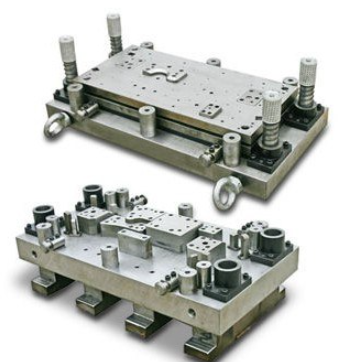Mold is a very common tool in the modern industry. Depending on their own shape, certain advanced molding machines to make certain plasticity or fluidity of the material also become a specific shape. There are several types of molding processes like blow molding, compression molding, extrusion molding and more. Today, we are going to show you the difference molding process between injection molding, vacuum forming and blow molding.

1.Vacuum Forming
A kind of plastic processing technology, the main principle is to heat the flattened plastic hard piece to become soft, take advantage of vacuum adsorption on the surface of grinding tool, and cool it to form. The vacuum forming process widely used in plastic packaging, lighting, advertising, decoration and other industries. Vacuum bag moulding: using vacuum forming technology to produce plastic products, and packaging products with the corresponding equipment.
The Advatage Of Vacuum Forming
The main advantages of vacuum forming packaging are saving raw and auxiliary materials, light weight, convenient transportation, good sealing performance, in line with the requirements of environmental protection and green packaging. It can package any special-shaped products without additional buffer. The packaged products are transparent, beautiful and easy to sell. Suitable for mechanized and automatic packaging, convenient for modern management, saving manpower and improving efficiency.
Vacuum forming packaging equipment mainly includes: vacuum forming molding machine, punch, sealing machine, high frequency machine, folding machine. Packaging products can be divided into: insert card, suction card, double foam card, half foam card, half fold foam shell, three fold foam shell, etc
2. Injection Molding
Injection molding, so-called thermoplastic injection moulding. The injection moulding process is to melt the plastic. It is then injected into the cavity. Once the molten plastic goes into the abrasive tool, it is cooled and shaped into the same shape according to the mold cavity. The resulting shape is often the final product, and no other injection moulding processing is needed before it is installed or used as the final product. Many details, such as bulges, ribs and threads, can be formed in one step of injection molding.
Injections Molding Machine
Injection molding machine has two basic parts: injection device and clamping device for melting and feeding plastic into abrasive tools. The function of the mold mixing device is as follows: 1. The mold is closed under the injection pressure. Take the injection molding products out of the machine, melt the plastic before it is injected into the mold, and then control the pressure and speed to inject the solution into the mold. At present, there are two designs of injection moulding machine: screw type pre plasticizer, which uses the pre plasticizing screw (the first stage) to inject its molten plastic into the column bar (the second stage).
The Advantage Of Injection Molding
The advantages of pre-plasticizing type injection molding machine are constant melt mass, high pressure and high speed, and precise injection volume control (using mechanical thrust device at both ends of piston stroke). These advantages are needed for transparent, thin-walled products and high production rate. Its disadvantages include uneven residence time (leading to material degradation), high equipment costs and maintenance costs.
The Application OF Injection Molding
The most commonly used reciprocating screw type injection device does not require a plunger to melt and inject the plastic.
3. Blow Molding
Also known as air blow molding, is a rapid plastic processing method. The tubular plastic mould parison obtained by extrusion or injection molding of thermoplastic resin is placed in a split die when it is hot (or heated to a softened state). After the parison is closed, compressed air is injected into the mould parison immediately to make the plastic mould parison inflate and cling to the inner wall of the die. After cooling and demoulding, various hollow products are obtained.
Blow Mold Process
The manufacturing process of blow molding is very similar to that of hollow products in principle, but it does not use mold. From the perspective of classification of plastic processing technology, the blow moulding process is usually listed in extrusion. Blow molding began to be used in the production of LDPE vials during the Second World War. After the 1950s, with the birth of HDPE and the development of blow moulding machines, blow molding technology has been widely used.
